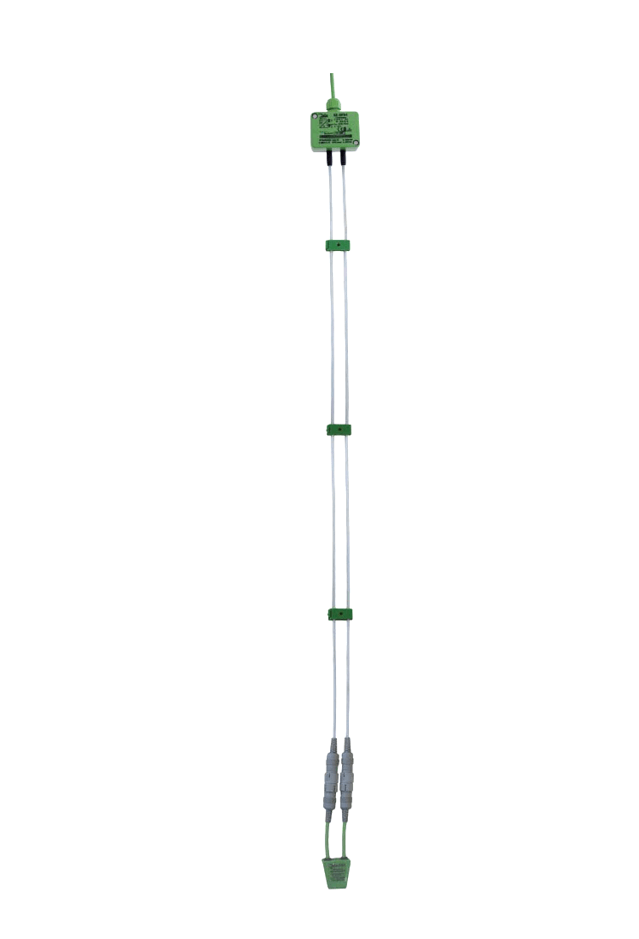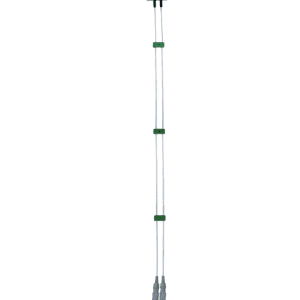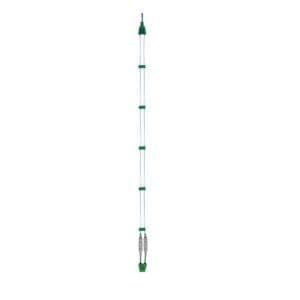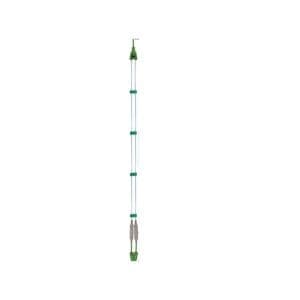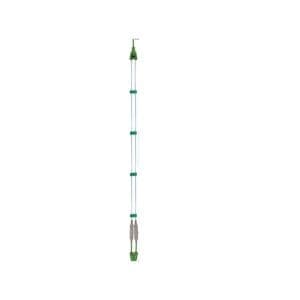KE-SPS3 JOLA cable electrode
Po naročilu. Pošljite povpraševanje.
Delivery time: okvirno 2 tedna
- design: leak detector with quiescent current / NC (interrupting)
- Sensor cables: 2 ropes of 316 Ti stainless steel, each 3 mm in diameter
- max. cable length: 100 m
- Electrode head: PC or PP
- temperature range: – 20 °C to + 60 °C
Description
The KE-SPS3 JOLA cable electrode signals via an electrode relay the presence of a liquid medium due to, for example, a burst pipe. Floor electrodes are designed for use in dry rooms.
KE-SPS3 with integrated galvanic isolation:
- prevents interconnection of electrode circuits
- prevents the formation of earth loops when more than one detector is connected to a common power supply circuit.
KE-SPS conductive cable electrodes. use only in normally dry environments. They can be used on floors, ceilings, along pipes or in two-pipe systems. They should be located at the lowest point of the potential hazard area to be monitored.
KE-SPS conductive cable electrodes. are equipped with two separate electrodes in the form of two sensor cables: 1 control electrode and 1 earth electrode. As soon as a conductive liquid creates a conductive path between the two sensor cables, the switching state of the leak detector changes.
Each of the two sensor cables consists of a stainless steel rope core and a polyester sheath. This protective sheath is designed to prevent stainless steel ropes from coming into contact with each other or with an electrically conductive surface (e.g. steel tub, steel pipe, etc.), thus preventing false alarms while allowing liquid to leak through the stainless steel of the rope.
The two sensor cables of the cable electrode shall be installed parallel to each other at a distance of ≤ 2 cm using sensor cable spacers, as a larger or smaller spacing affects the response level of the system in case of leakage.
Conductive measurement principle
The principle of conductive measurement is used to detect electrically conductive liquids. Not suitable for the detection of electrically non-conductive liquids.
Electrically conductive liquids are usually aqueous solutions of salts, acids or alkalis. In water, the molecules of these substances separate into positive and negative ions, which give the aqueous solution its electrical conductivity. The conductive leak detector detects the presence of an electrically conductive liquid and then sounds an alarm.
The measurement process uses alternating current to ensure accurate response sensitivity and to prevent galvanic processes at the electrodes. The conductive leak detector shall have an integrated electronic evaluation unit with galvanically isolated circuits. This prevents the electrode circuits from interconnecting and forming earth loops if more than one of these leakage detectors is connected.
Reliable detection of liquids with poor electrical conductivity, such as condensate or demineralised water, is ensured by the factory-set sensitivity response of the conductive leak detector.
KE-SPS3 features
- design: leak detector with quiescent current / NC (interrupting)
- Sensor cables: 2 ropes of 316 Ti stainless steel, each 3 mm diameter, each covered with a protective halogen-free polyester sheath; length: 2 m, longer on request
- max. cable length: 100 m
- Electrode head: PC or PP
- electrical connection: three-wire connection via 3 x 0.75 connecting cable, 2 m long; equipped with halogen connecting cable on request
- supply voltage: only for connection to extra low voltage SELV or PELV! (see datasheet)
- Energy consumption: max. 0.5 VA
- Output: estimate based on the magnitude of energy consumption
- short-circuit protection: present, Ik < 30 mA
- switching condition without supply voltage: low signal
- switching status with dry sensor cables: the output of the PNP transistor carries the directional supply voltage = high signal
- switching status with wet sensor cables: PNP transistor output does not carry a directional supply voltage = low signal
- cable break control of sensor cables: via the Z-4V7 cable break control unit at the end of the sensor cables
- switchover condition with sensor cable line break: PNP transistor output does not carry the directional supply voltage = low signal
- cable break control of connecting cables: control of cable breakage due to quiescent current
- galvanic isolation: only for connection to extremely low voltage SELV or PELV! voltage resistance > 500 V between the capacitor circuit and the supply circuit
- max. no-load voltage on sensor cables: 10 Veff 60 Hz
- max. short-circuit current on sensor cables: 0.1 mA
- response sensitivity: approx. 30 kΩ or approx. 33 μS (conductivity)
- temperature range: – 20 °C to + 60 °C
For more technical information, please refer to the datasheet attached under the Documentation tab.
Example of KE-SPS3 use: monitoring false floors in a server room using a cable electrode and a panel electrode in an adjacent room.
Welcome to the article ”Conductive Measurement of Liquids”
Povpraševanje
You may also like…
For your victories, with our solutions. Call us:
Contact us.
Call us:
+386 (0)2 62 96 720
Email us:
[email protected]

